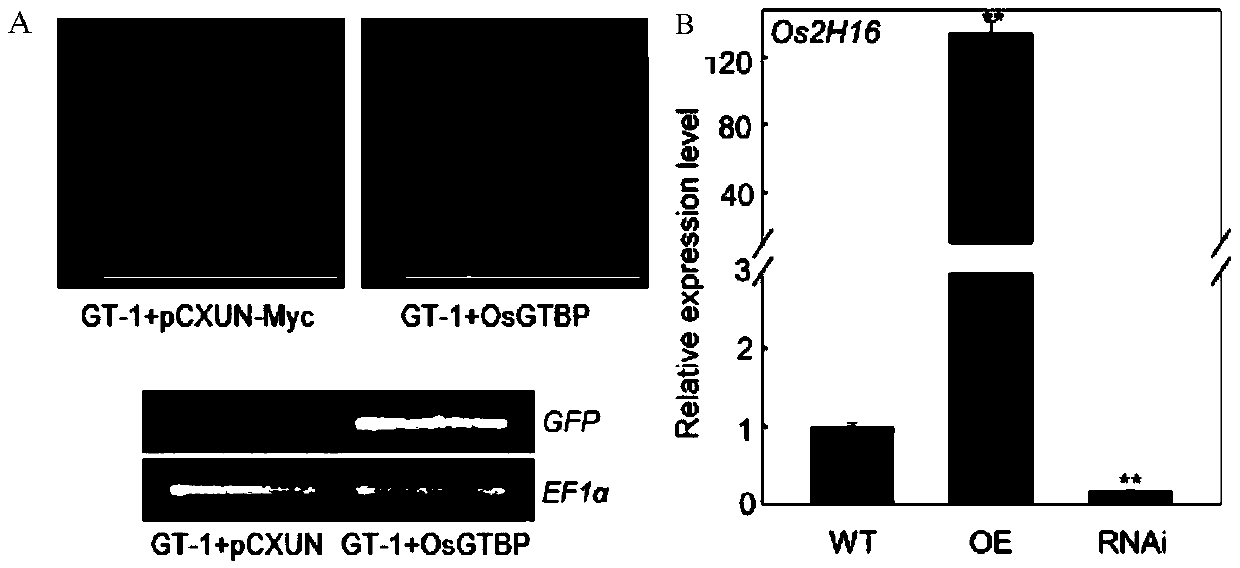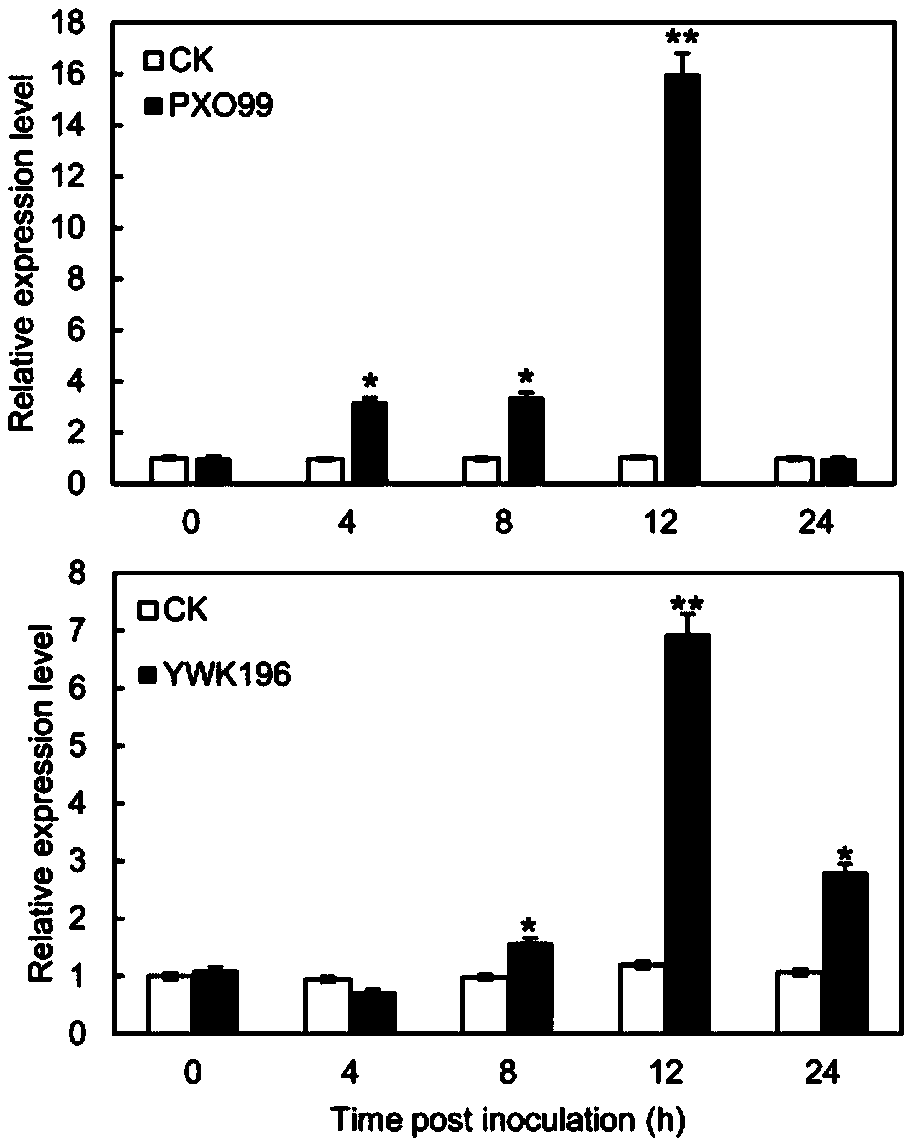Rice transcription factor OsGTBP for regulation and control cis-type reaction element GT-1 and application thereof
A technology of rice transcription factor, GT-1, applied in application, genetic engineering, plant genetic improvement and other directions, can solve problems such as yield and quality decline of sheath blight
- Summary
- Abstract
- Description
- Claims
- Application Information
AI Technical Summary
Problems solved by technology
Method used
Image
Examples
Embodiment 1
[0035] Example 1: Verification of the interaction between OsGTBP and the pathogenic induction element GT-1
[0036] Through the yeast one-hybrid system, we screened a protein with unknown function that interacts with pathogen-inducing elements. This protein contains a conserved WD40 domain and named it OsGTBP.
[0037] Firstly, the interaction was verified by the yeast screening system. Using rice IRBB13cDNA as a template, using a forward primer, its nucleotide sequence is shown in SEQ ID NO.5 (5′-AAG ATCGAT ATGGCCTCGCCGTCATC-3', the underlined base is the restriction endonuclease ClaI recognition site) and reverse primer, its nucleotide sequence is as shown in SEQIDNO.6 (5'-AAG GAGCTC CTCAGTGACATATGTCTTGATCAGG-3', the underlined base is the restriction endonuclease SacI recognition site) to amplify the OsGTBP fragment, the reaction procedure is as follows: pre-denaturation at 94°C for 5min, denaturation at 94°C for 40s, annealing at 55°C for 40s, extension at 72°C for 1min...
Embodiment 2
[0043] Example 2: OsGTBP activates GT-1 and regulates Os2H16 gene expression
[0044] Using the 35Smini sequence as a template, use a forward primer whose nucleotide sequence is shown in SEQ ID NO.11 (5'-GAAAAAGAAAAACGCAAGACCCTTCCTCTATAA-3') and a reverse primer whose nucleotide sequence is shown in SEQ ID NO.12 (5'-GGGACTGACCTACCCGGG- 3ˊ) Amplify the 35Smini fragment with GT-1 element, the reaction procedure is as follows: pre-denaturation at 94°C for 5min, denaturation at 94°C for 40s, annealing at 55°C for 40s, extension at 72°C for 30s, reaction for 35 cycles, and post-extension at 72°C for 7min;
[0045] After the reaction, the PCR product was detected by 1.0% agarose gel electrophoresis, the target fragment was recovered and purified, and the obtained PCR product was verified by sequencing. Tobacco leaves were co-injected with OsGTBP-Myc Agrobacterium GV3101, and fluorescence observation was performed 5 days later. Compared with the control, stronger fluorescence signals...
Embodiment 3
[0051] Example 3: Induced expression pattern of OsGTBP gene after inoculation of pathogenic bacteria
[0052] In order to detect the expression pattern of OsGTBP gene induced by pathogenic bacteria, we used quantitative RT-PCR technology to analyze the expression pattern of OsGTBP gene induced by bacterial blight PXO99 and sheath blight YWK196. Leaf-cutting method was used for the inoculation of bacterial blight to inoculate rice at the adult plant stage, and toothpick insertion method was used for inoculation of sheath blight. Forward primer used, its nucleotide sequence is shown in sequence table SEQIDNO.17, 5'-GCTCCGCCCAGGTCAAG-3', reverse primer, its nucleotide sequence is shown in sequence table SEQIDNO.18, 5'-TCCTTCAGACATGTTCCAATAATCC- 3'.
[0053] The analysis results showed that the OsGTBP gene could be induced by bacterial blight PXO99 and sheath blight YWK196 ( image 3 ), indicating that it is involved in the resistance response of rice to bacterial blight and she...
PUM
 Login to View More
Login to View More Abstract
Description
Claims
Application Information
 Login to View More
Login to View More - R&D
- Intellectual Property
- Life Sciences
- Materials
- Tech Scout
- Unparalleled Data Quality
- Higher Quality Content
- 60% Fewer Hallucinations
Browse by: Latest US Patents, China's latest patents, Technical Efficacy Thesaurus, Application Domain, Technology Topic, Popular Technical Reports.
© 2025 PatSnap. All rights reserved.Legal|Privacy policy|Modern Slavery Act Transparency Statement|Sitemap|About US| Contact US: help@patsnap.com



